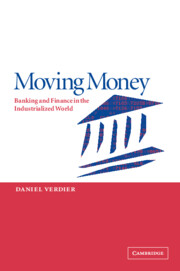Book contents
Part III - The second expansion (1960–2000)
Published online by Cambridge University Press: 22 September 2009
Summary
Following forty years of stagnation, financial centers started to grow again in the wake of a long and hesitant process of deregulation. The movement began in earnest in the 1960s, was set back by the currency and monetary turmoil of the 1970s, and resumed its course in the 1980s. Deregulation opened up an era of thorough reorganization in all financial systems, marked by sectoral concentration, the acquisition of foreign banks and opening of branches abroad, the development of deep international money markets with the Euromarkets, and the displacement of bank loans by bonds, stocks, and market instruments of varying time lengths. Many banks took advantage of the new freedom to try their hand at new products, especially market-related ones. This initial shakeup was followed by the present period of consolidation, in which banks are now seeking to improve profitability by focusing on what they do best.
The present part reviews the deepening of core–periphery patterns in OECD countries by taking up in the following order the four issues of spatial concentration, internationalization, securitization, and specialization. Like the preceding one, the present part emphasizes the reluctance of decentralized countries to submit to global changes. In it, I argue that concentration has increased across countries, but that it has taken place only within banking sectors, not across sectors. Deregulation has merely restored the degree of competition that existed in the pre-Depression days (chapter 7).
- Type
- Chapter
- Information
- Moving MoneyBanking and Finance in the Industrialized World, pp. 127 - 128Publisher: Cambridge University PressPrint publication year: 2003

